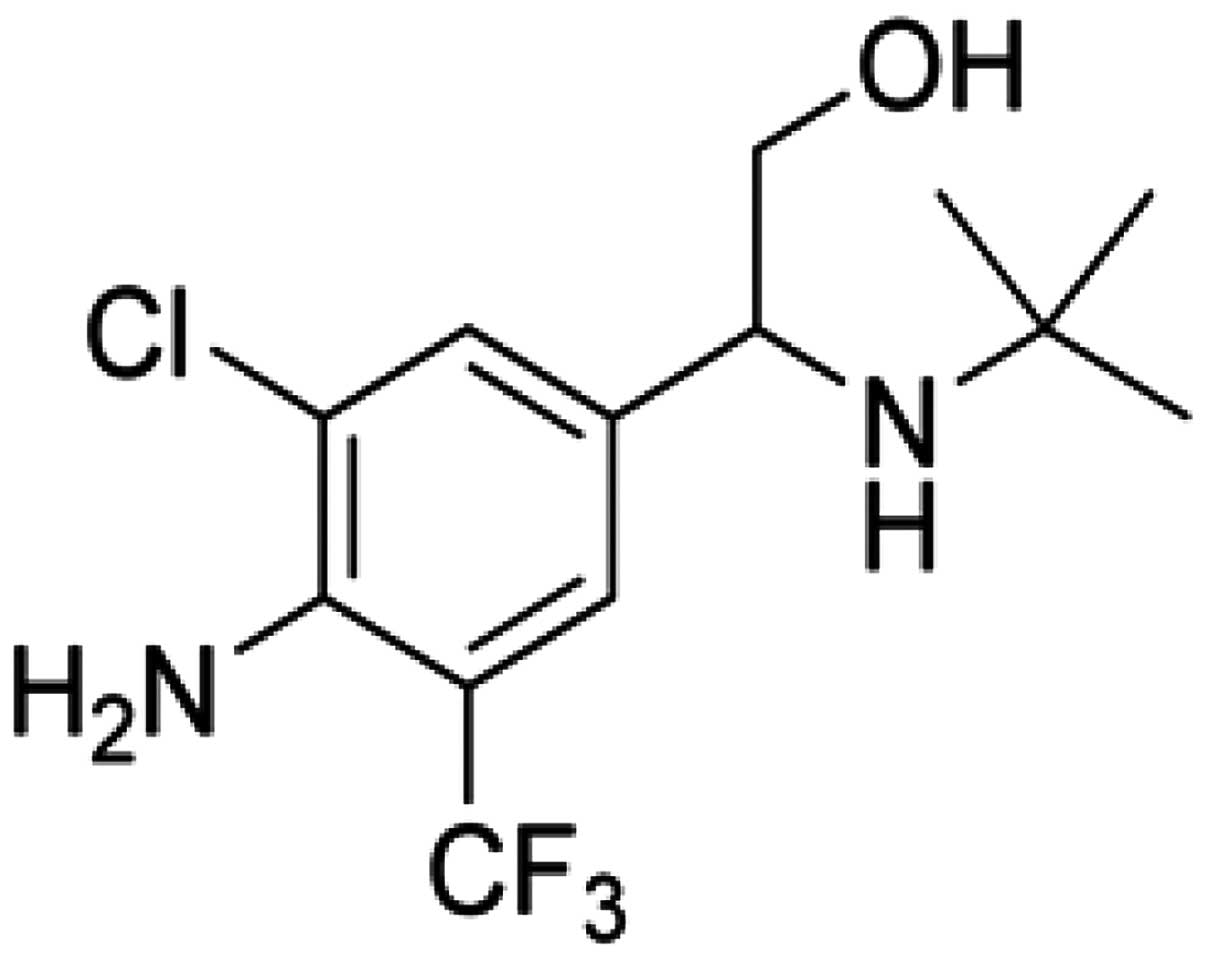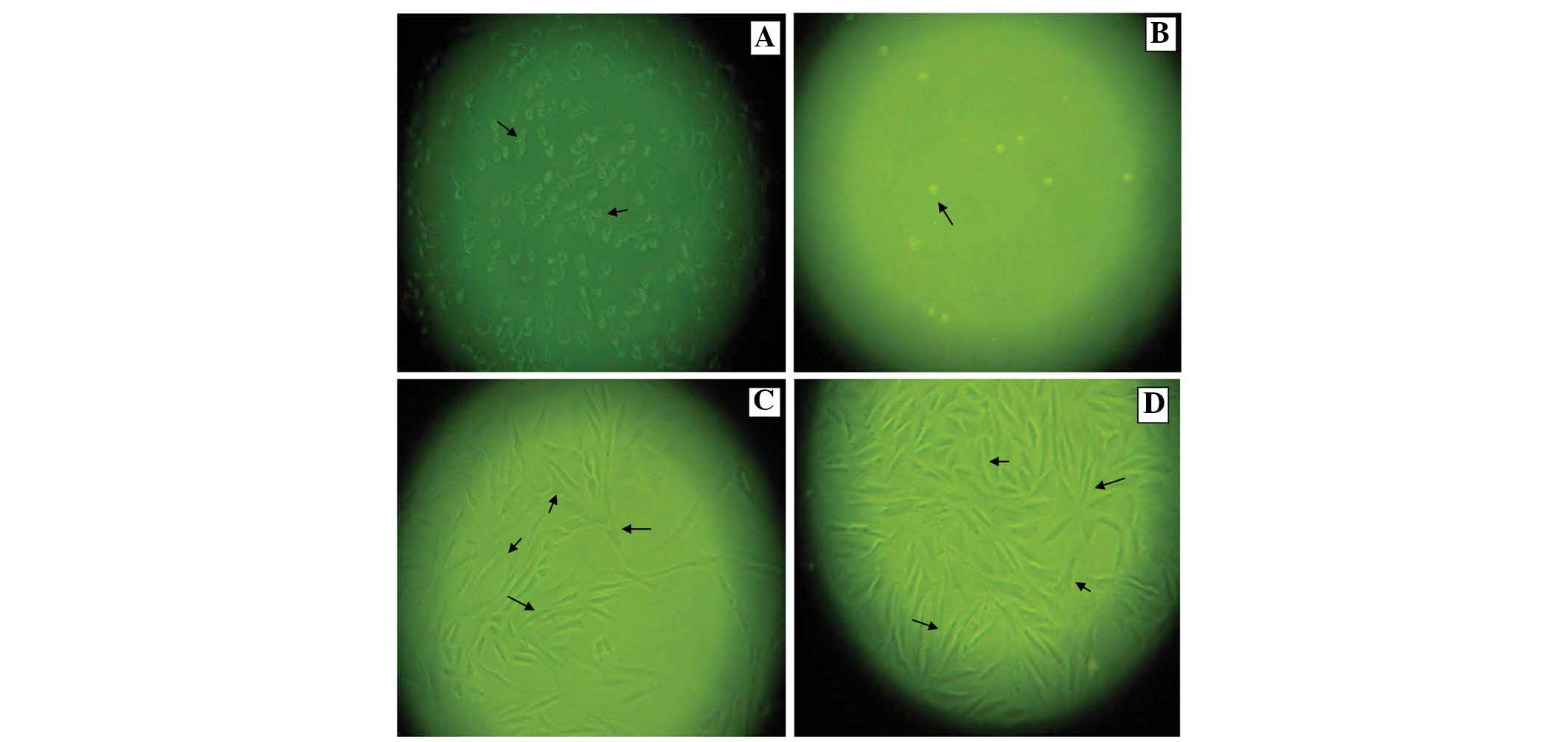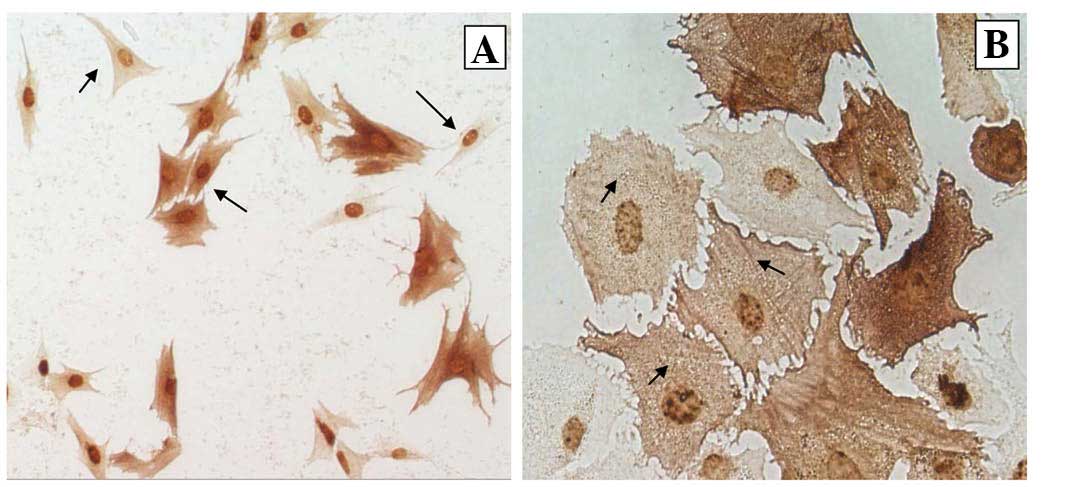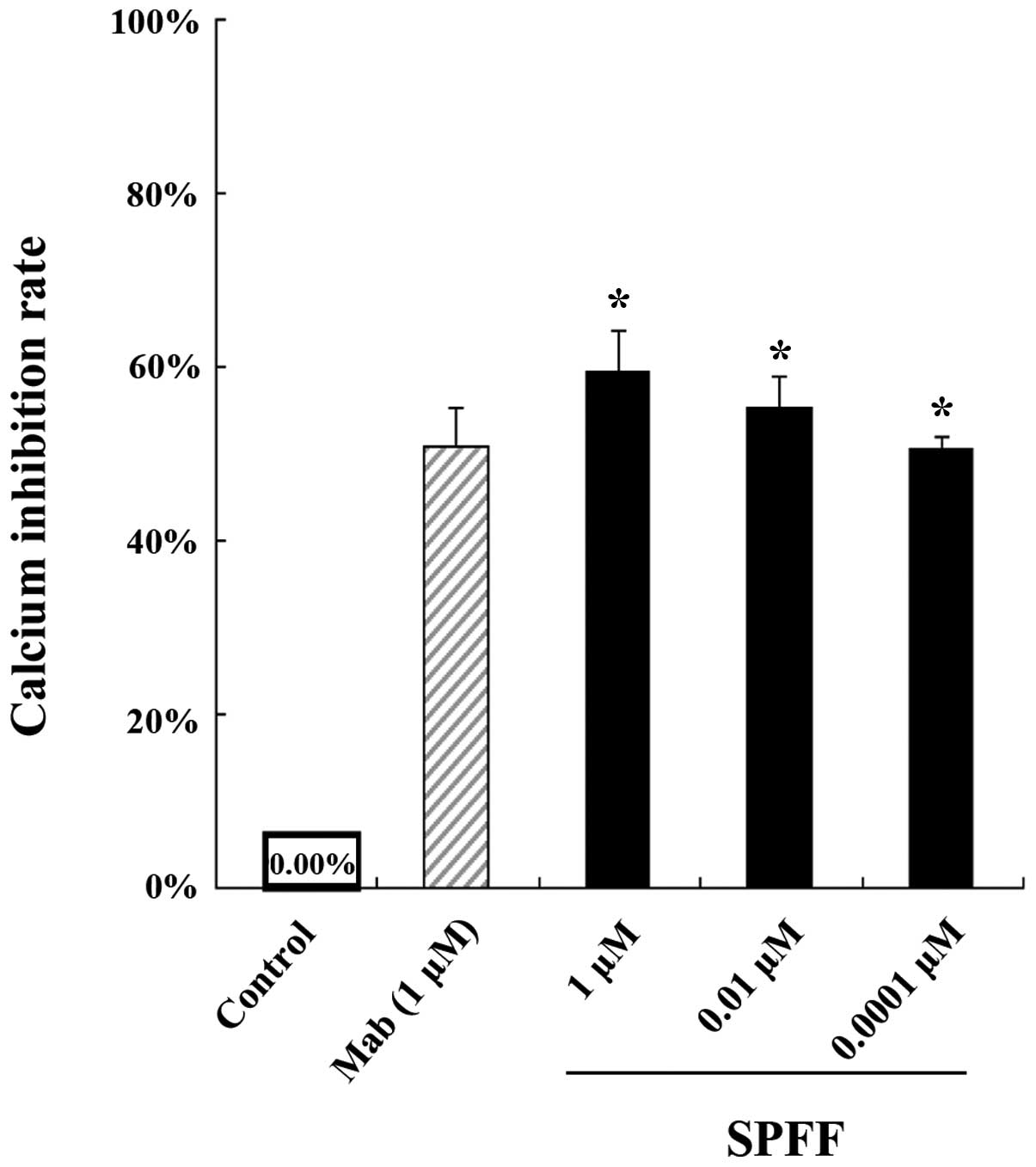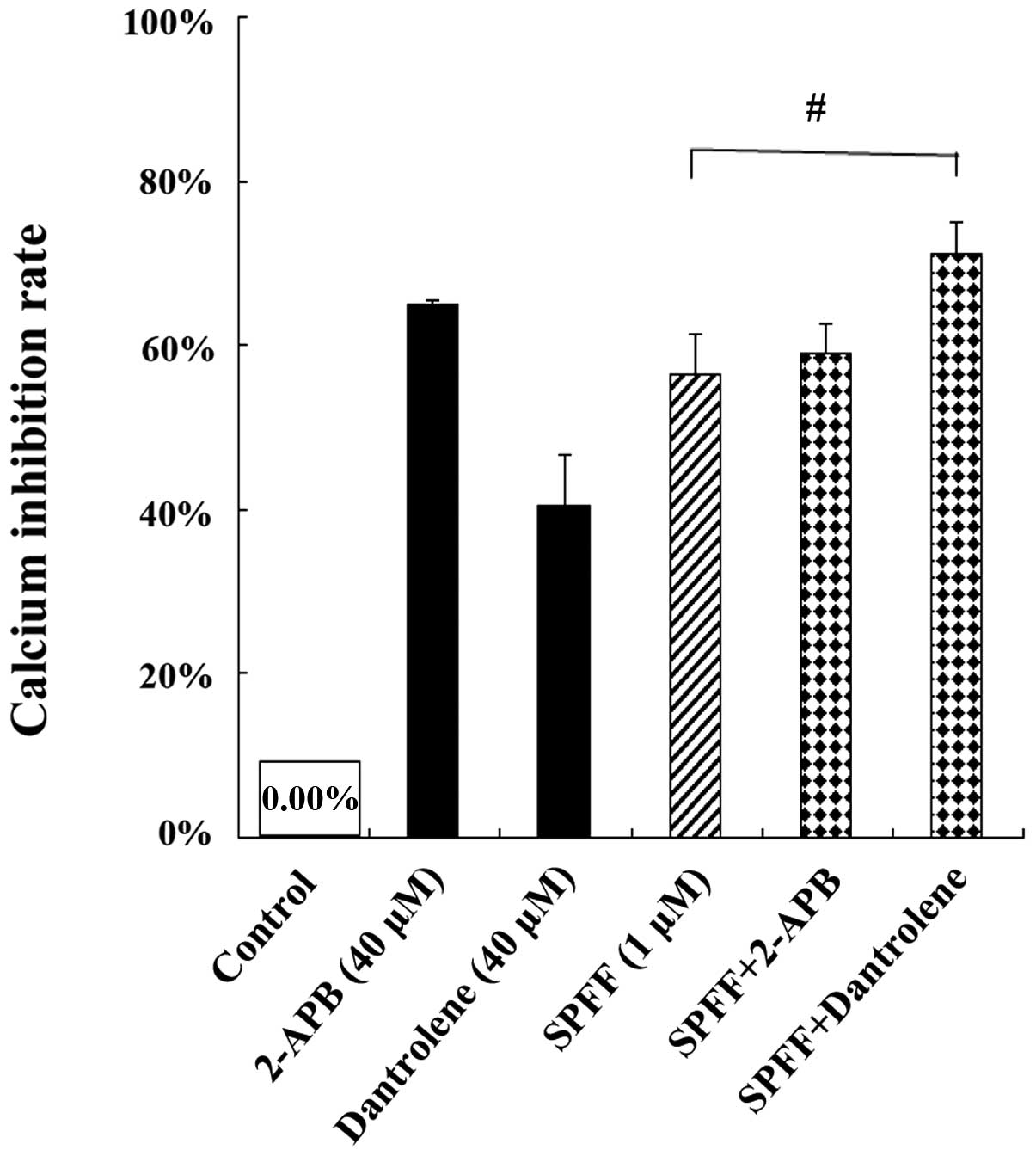An improved method for guinea pig airway smooth muscle cell culture and the effect of SPFF on intracellular calcium
- Authors:
- Published online on: July 15, 2014 https://doi.org/10.3892/mmr.2014.2385
- Pages: 1309-1314
Metrics: Total
Views: 0 (Spandidos Publications: | PMC Statistics: )
Total PDF Downloads: 0 (Spandidos Publications: | PMC Statistics: )
Abstract
The aim of the present study was to establish an improved method for in vitro guinea pig airway smooth muscle (ASM) cell culture and to evaluate the effect of 2-(4-amino-3-chloro-5-trifluomethyl-phenyl)-2-tert-butylamino-ethanol hydrochloride (SPFF), a novel β2-adrenoceptor agonist, on the release of intracellular calcium in cells. A procedure for the efficient isolation, culture, passage and characterization of the cells was described. Primary ASM cells of guinea pigs were cultured by modified tissue cultivation. The cells were identified by their morphological characteristics and immunocytochemistry. The relative inhibition of the release of intracellular calcium by drugs in the cells was measured by fluorometric quantification with fluorochrome Fura-2/AM. The results were as follows: a) The ASM cells of the guinea pigs were successfully cultured and subcultured by using our improved method and typical peak-valley characteristics were observed under the phase contrast microscope; b) data from immunocytochemical staining with specific α-smooth muscle actin (α-SMA) demonstrated that the cells were ASM cells; c) the growth characteristics and cell viability demonstrated that the cells were in good condition and were able to be applied in the follow-up studies; d) the inhibitory effect of SPFF on the release of intracellular calcium was concentration‑dependent when compared with the control and e) the potential mechanisms of SPFF on the inhibition of intracellular calcium may be independent of the ryanodine receptor, but may be closely associated with the inositol 1,4,5-trisphosphate receptor.



